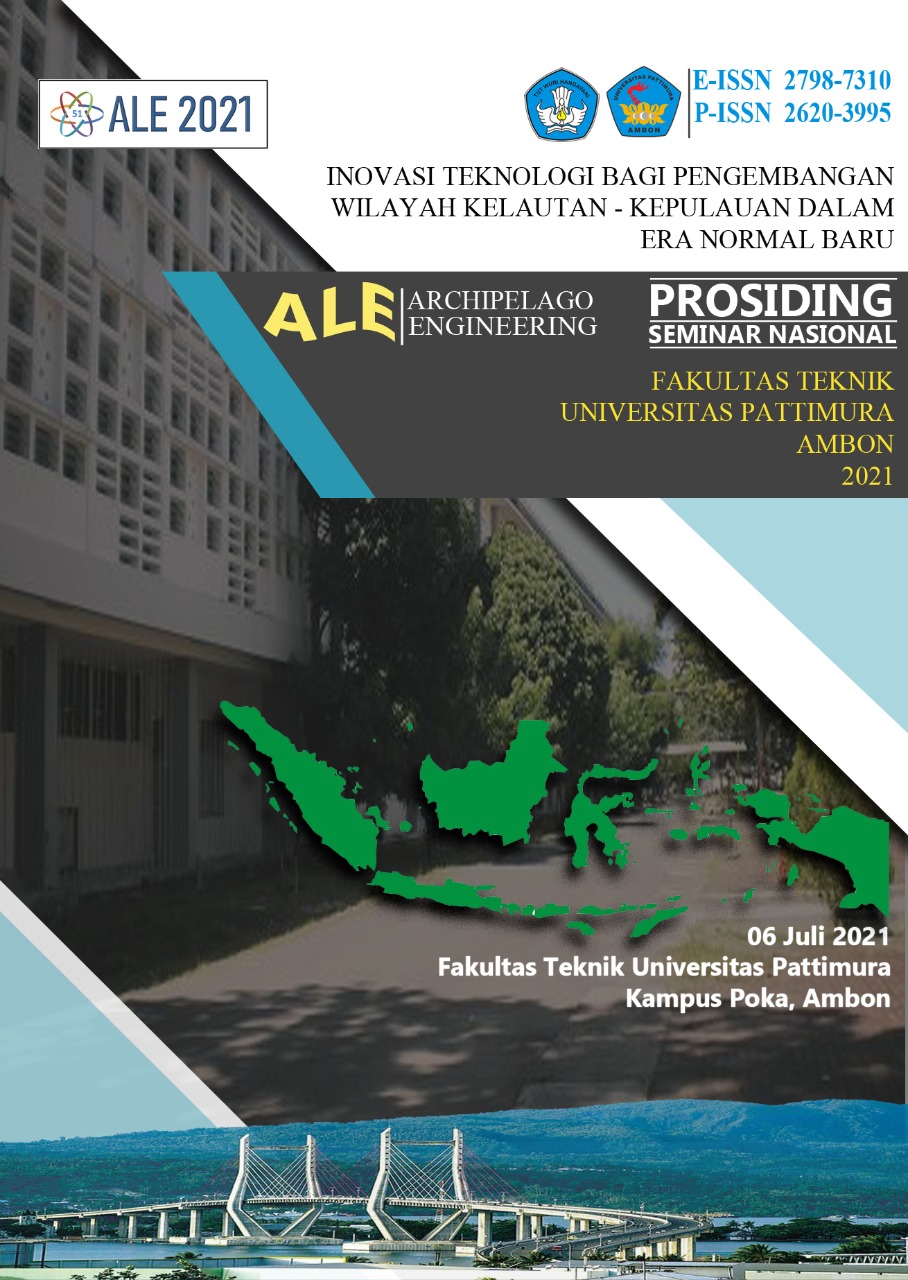KAJI PERFORMANSI REFRIGERAN R-290, R-32, DAN R-410A SEBAGAI ALTERNATIF PENGGANTI R-22
Abstract
Refrigerant R-22 is a substance that destroys the ozone layer, so that in the field of air conditioning it has begun to be replaced, among others with refrigerants R-32 and R-410a, and also R-290. Through this research, we want to know how much Coefficient of Performance (COP) and Refrigeration Capacity (Qe) can be produced for the four types of refrigerants. The study was carried out theoretically for the working conditions of the vapor compression cycle with an evaporation temperature (Tevap) of 0, -5, and -10oC, a further heated refrigerant temperature (ΔTSH) of 5 oC, a condensation temperature (Tkond) of 45 oC and a low-cold refrigerant temperature. (ΔTSC) 10 oC and compression power of 1 PK . The results of the study show that the Coefficient of Performance (COP) in the use of R-22 and R-290 is higher than the use of R-32 and R-410a, which are 4,920 respectively; 4,891; 4.690 and 4.409 when working at an evaporation temperature of 0 oC; 4.260; 4,234; 4.060 and 3.812 when working at an evaporation temperature of -5 oC; and amounted to 3,730; 3,685; 3,550 and 3,324 if working at an evaporation temperature of -10 oC. Based on the size of the COP, if this installation works with a compression power of 1 PK, then the cooling capacity of the R-22 and R-290 is higher than the R-32 and R-410a, which are 3,617 respectively. kW; 3,597 kW; 3,449 kW and 3,243 kW. If working at an evaporation temperature of 0 oC; 3.133 kW; 3.114 kW; 2,986 kW and 2,804 kW if working at an evaporation temperature of -5 oC; and 2,741 kW; 2,710 kW; 2,611 kW and 2,445 kW if working at an evaporation temperature of -10oC.
Downloads
References
[2] Venkataiah, S., & Rao, G.V. (2014). Analysis of Alternative Refrigerants to R22 for Air-Conditioning Applications at Various Evaporating Temperatures.
[3] Arijanto dan Ojo Kurdi (2007) Pengujian Refrigeran Hycool HCR-22 pada AC Splite sebagai pengganti Freon R-22, ROTASI, Volume 9 Nomor 2 April 2007.
[4] Ega Taqwali; HASAN, Syamsuri. Analisis Performa Refrigeran R 290 Pada Sistem AC Yang Menggunakan Accumulator Heat Exchanger. Jurnal Energi Dan Manufaktur, [S.l.],v.8,n.1, July 2015. ISSN 2541-5328.
[5] Pramudantoro, T. P. (2018) “Pengaruh Variasi Massa Pengisian R290 Sebagai Refrigeran Pengganti R22 Pada Kinerja Freezerâ€, ReTII, 00.
[6] Parashurama, S., Saleel, C. A., Govindegowda,M. S., and Khan, S. A., (2019). Hydrocarbons as Alternative Refrigerants in Domestic Refrigerators, International Journal of Innovative Technology and Exploring Engineering, 8: 496 – 501
[7] ]Kusnandar, Kurniawan, Y., Rohmat N. Y. Analisa Performansi Mesin Pengkondisi Udara Menggunakan Refrigerant R32. Seminar Nasional Penelitian Pengabdian Masyarakat, Universitas Bangka Belitung, 194-196. 2018.
[8] Amrullah, Zuryati Djafar, Wahyu H. Piarah. (2017), Analisa Kinerja Mesin Refrigerasi Rumah Tangga Dengan Variasi Refrigeran, Jurnal Teknologi Terapan, vol 3, No 2.
[9] Lumentut, Samuel R. (2020) Perbandingan Freon, R-32, R-22, R-410a, dan R-290, Sumber: https://www.nationalelektronik.com/2020/01/perbandingan-freon-r32-r22-r410a-dan-r290/ diakses pada 28 Juni 2020. Pukul 10;00 PM.
[10] ASHRAE, (1990): Fundamentals Handbook, American Society of Heating, Refrigerating and Air-Contioning Enggineer, Inc. Atlanta.
[11] Priangkoso, Tabah, Nur Edy Santoso, Teguh Apriyanto dan Muhammad Dzulfikar (2018). Pengaruh Jenis Refrigerant dan Diameter Pipa Kapiler terhadap Kinerja AC Split, Jurnal Ilmiah Momentum, Vol. 14, No. 2, Oktober 2018, Hal. 39-45
[12] Mahendra, Muhammad Adrian, dan Ozkar Firdaus Homzah (2015). Analisa Perbandingan Kinerja Mesin Pendingin AC Kapasitas 2 HP menggunakan R22, R290 dan R407C. Jurnal Teknologi Pendingin dan Tata Udara Politek- nik Sekayu (PETRA) Vol 1. No, 1 Agustus 2015 hal. 11-19.
Copyright (c) 2021 Rikhard Ufie, Cendy S. Tupamahu, Sefnath J. E. Sarwuna, Jufraet Frans

This work is licensed under a Creative Commons Attribution-ShareAlike 4.0 International License.
An author who publishes in the ALE Proceeding agrees to the following terms:
- Author retains the copyright and grants ALE Proceeding the right of first publication of the work simultaneously licensed under the Creative Commons Attribution-ShareAlike 4.0 License that allows others to share the work with an acknowledgment of the work's authorship and initial publication in this journal.
- Author is able to enter into separate, additional contractual arrangements for the non-exclusive distribution of the journal's published version of the work (e.g., post it to an institutional repository or publish it in a book) with the acknowledgment of its initial publication in this journal.
- Author is permitted and encouraged to post his/her work online (e.g., in institutional repositories or on their website) prior to and during the submission process, as it can lead to productive exchanges, as well as earlier and greater citation of the published work (See The Effect of Open Access).
Read more about the Creative Commons Attribution-ShareAlike 4.0 Licence here: https://creativecommons.org/licenses/by-sa/4.0/.






